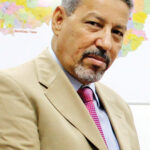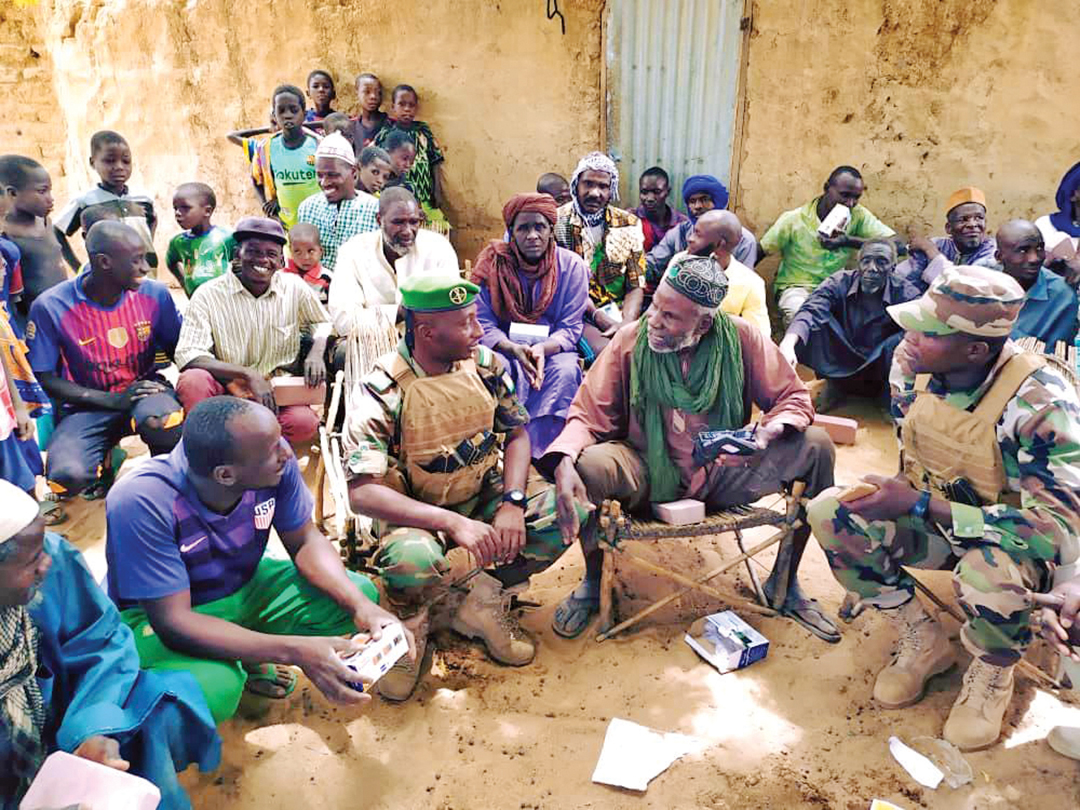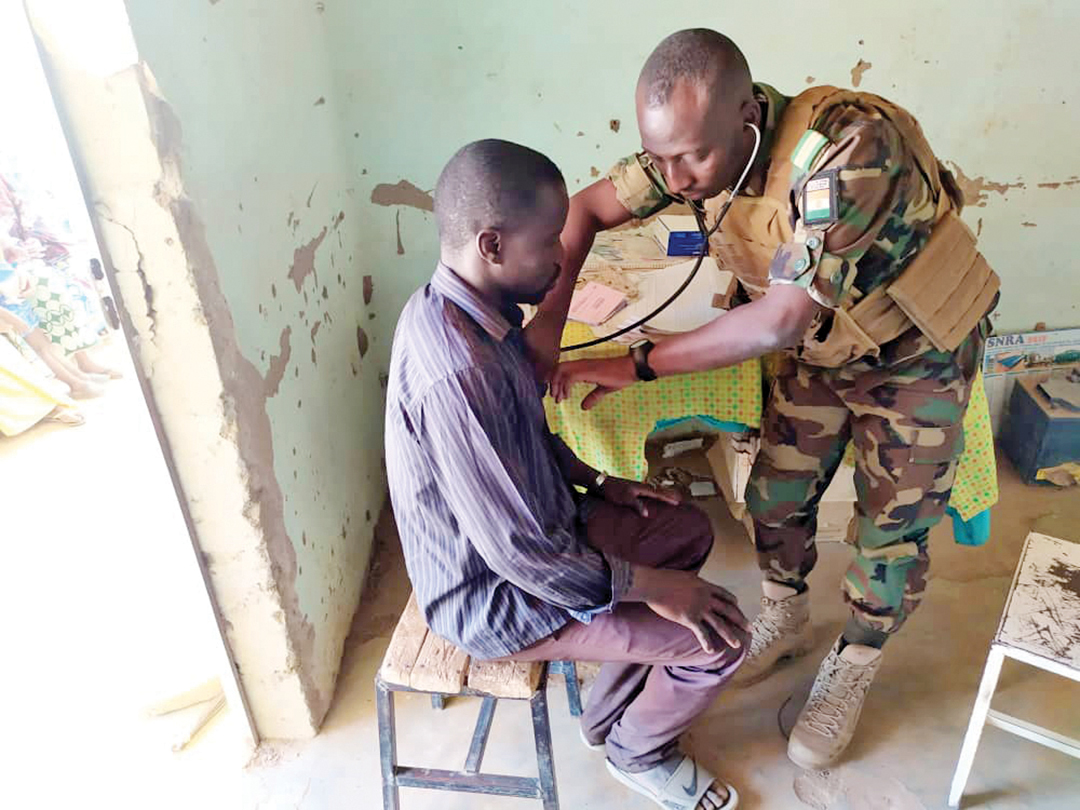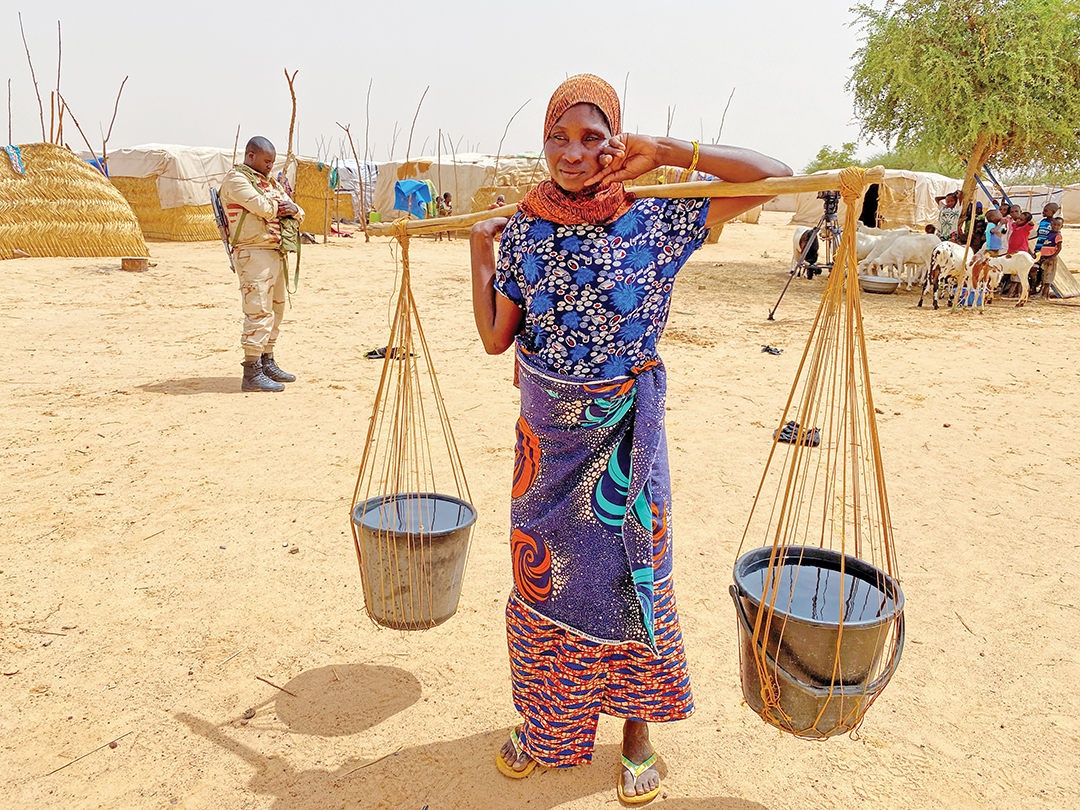‘The Crisis is Multidimensional, and the Solution Must Be Global’
The Chief of the G5 Sahel Department of Defense Calls for a New Marshall Plan to Save the Sahel
ADF STAFF

chief of the Department of Defense of the G5 Sahel
Mohamed Znagui Sid’Ahmed Ely knows the security challenges of the Sahel well. A former brigadier general in the Mauritanian Army, he has spent time in command positions, as an instructor and at the country’s general staff headquarters. He humbly says, “My career is a normal career of an officer,” but his resume shows he has been at the forefront of the region’s fight against extremism.
He commanded the region’s Joint Military Staff Committee (CEMOC) in Tamanrasset, Algeria, and later was appointed inspector general of the Mauritanian Armed Forces. He also spent time overseas as a defense attaché.
In 2015, he left active duty and became the chief of the Department of Defense for the newly created G5 Sahel. At the time, the security situation was particularly perilous. Extremist groups had been driven out of northern Mali by Chadian and French forces but had regrouped and formed a base of operations in the tri-border area between Burkina Faso, Mali and Niger known as Liptako-Gourma.
“They took refuge in the cross-border zones that are remote — difficult to access and abandoned by states,” Sid’Ahmed Ely told ADF. “They turned them into lawless areas where they won the loyalty or terrorized the populations, practiced illicit trafficking, and launched attacks against rural and urban populations, and against the national and international forces present.”

In 2017, the G5 Sahel Joint Force was created and hailed as a homegrown solution to the Sahel’s security challenges. Made up of 5,000 Soldiers in seven battalions spread across three zones, it was meant to clear terrorists from border regions and address cross-border crime such as drug trafficking. But as it enters its fifth year, the region’s security landscape remains bleak. More than 5,000 people were killed in attacks or armed combat in 2021, and more than 2 million people are displaced. In 2021, nearly 29 million people in the Sahel needed assistance and protection, an increase of 5 million people over 2020, according to the United Nations.
Sid’Ahmed Ely is quick to say there is much work to be done.
“The situation today is still troubling, and the joint force still lacks the means required for its mission,” he said.
He also believes the crisis is being fueled by factors beyond the borders of the five G5 Sahel nations: Burkina Faso, Chad, Mali, Mauritania and Niger. Libya’s civil war has led to a spillover of fighters and weapons into Sahelian countries. The loss of ground by the Islamic State in the Middle East also has caused fears that the Sahel will attract battle-hardened foreign fighters.
“Terrorism (instead of using the word jihadism, which is a misnomer) has never been Sahelian,” Sid’Ahmed Ely said. “It was imported to us and grafted onto our local problems to produce the complex situation we are living in today. The vast desert areas, the lure of profits through criminal trafficking, the deleterious situation in our area, the precariousness of our means and the reluctance of the international community make me fear a new wave of terrorism could come to our region.”
But he insists that the joint force has made gains. Success can be measured in regional cooperation. It wasn’t long ago that cooperation between the five countries was disjointed and, sometimes, outright hostile. Now the countries have created a Platform for Security Cooperation; founded a Center for Analysis and Early Warning in Ouagadougou, Burkina Faso; and founded a Fusion Center in Niamey, Niger. The multinational forces train jointly at the G5 Sahel Defense College in Nouakchott, Mauritania, and at a Sahelian Security College in Bamako, Mali. Soon a regional police academy will open in N’Djamena, Chad.

“In such a short time and coming from five countries, it has succeeded in integrating and working together under one force command,” Sid’Ahmed Ely said. “It ensures common pre-deployment training for the men, and it set up a police component for judiciary oversight and compliance with the law.”
At the operational level, the joint force created rapid action groups of gendarmes in each country that are trained and equipped for anti-terror missions. Sid’Ahmed Ely particularly lauds the seamless coordination of the forces by the Tactical Allied Command Post in Bamako, which has authority over the three zone headquarters. A separate joint command was created in Niamey for coordination with allied foreign forces, such as France in the tri-border region.
“The joint force strategy is to act in zones in partnership with the allied forces and the national forces from the region by prioritizing the areas most targeted by the enemy,” he said. “Currently, it concentrates its efforts on the central zone, which is where the tri-border region is located.”
One particular success was Operation Sama, which was conducted in three phases in Liptako-Gourma over more than two years. The operation helped regain territory and dismantle terrorist infrastructure by capturing bomb-making equipment, motorbikes, fuel, weapons and mobile phones. The operation emphasized civil-military actions such as distributing school kits to children and radios and food items to adults. It offered health services to some of the most vulnerable.
“The operations have helped to keep up the pressure on armed and terrorist groups and to reinforce trust between the Force and civilian populations,” the U.N. said in its May 2021 report of the secretary-general. “The Joint Force also reports increased collaboration between its units and the population.”

Still, the joint force faces major challenges. It lacks its own air capacity for transporting troops and equipment, conducting reconnaissance or providing air support to ground troops. Sid’Ahmed Ely said the joint force also lacks the ability to collect satellite imagery and gather intelligence electronically.
“This really harms the force’s effectiveness,” he said. “This lack of air capacity can be resolved by making it available through other structures, if not direct, or by strengthening the national capacities of the contributing countries, which provide air support to the joint force.”
Sid’Ahmed Ely said that even though the joint force needs resources, resolving the crisis must go beyond military solutions.
“The degree of violence is getting higher and higher despite the best efforts of the forces which, it should be pointed out, are very significant,” he said. “This challenges us and reminds us that the force alone will not solve the security problems in the Sahel.”
He points out that the Sahel is facing a changing climate, an exploding youth population, widespread unemployment and political instability.
“The crisis is multidimensional, and the solution must be global and multisectoral with an urgent, massive and comprehensive commitment from the international community.”
As the G5 Sahel alliance enters 2022, it’s in a particularly tenuous position. France is repositioning its forces in the region and ending its Operation Barkhane counterterror mission. In August 2021, Chad withdrew 600 Soldiers from the joint force. The U.N. estimates that the joint force needs $391 million annually to perform its duties, but it lacks a consistent funding source. Sid’Ahmed Ely said the time is right for the international community to make a commitment to the joint force and to the Sahel in the form of a “Marshall Plan,” an international investment that would buoy the region. The original Marshall Plan in 1948 offered foreign aid to Western Europe to rebuild war-torn areas.
“I hope for a greater and more substantial engagement of the international community in the Sahel, particularly at the level of the United Nations, the African Union and the European Union to help, not only at the security level, which is a priority, but also to decide on a Marshall Plan for the benefit of the Sahel and the cancellation of the Sahelian debt,” Sid’Ahmed Ely said. “It is at this price, and only at this price, that the security trends will be reversed and the Sahel will become a zone of security and peace between Africa and Europe and between the Middle East and America.”


Comments are closed.